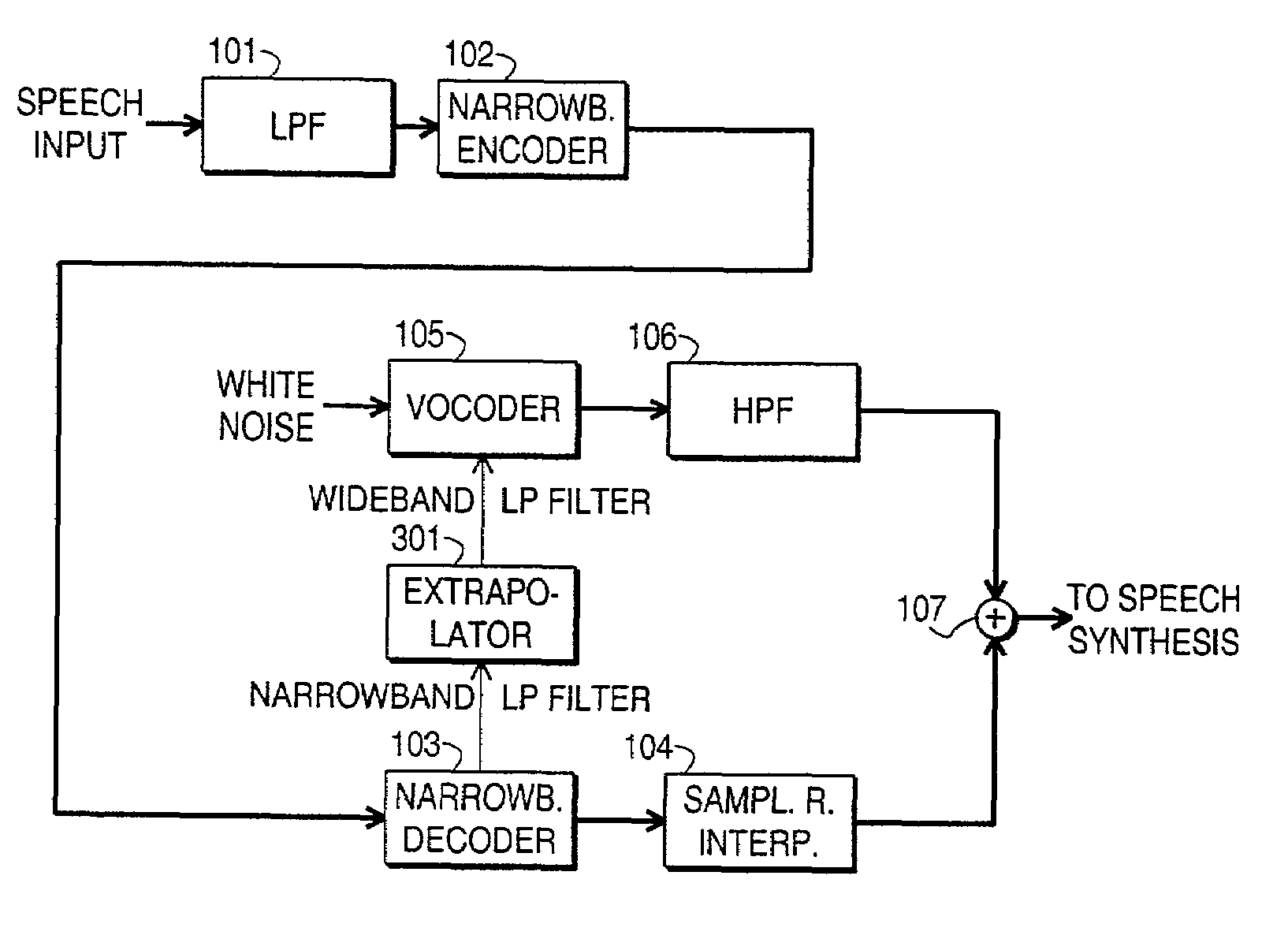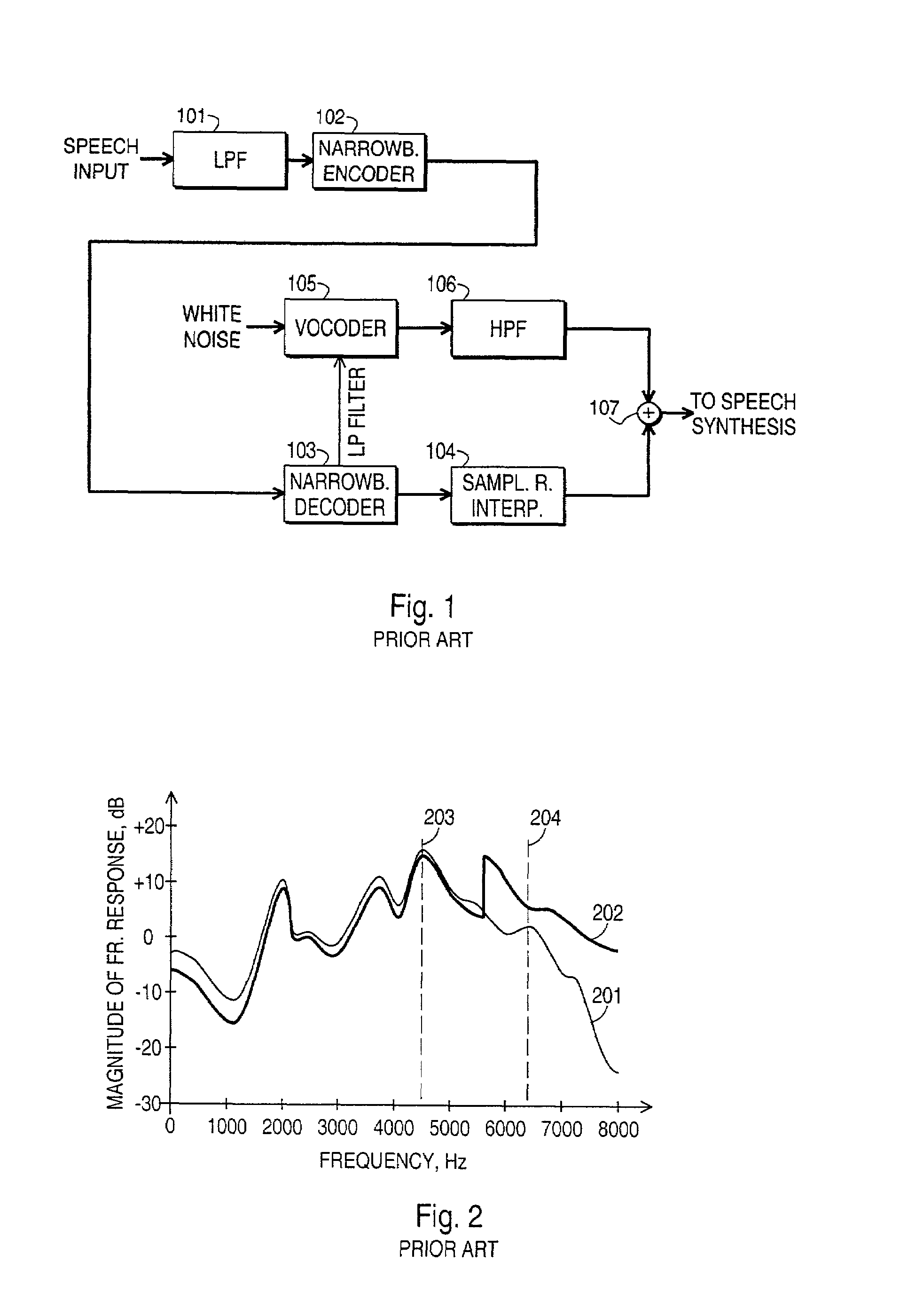Speech decoder and a method for decoding speech
a speech decoding and speech technology, applied in the field of speech decoding and speech decoding methods, can solve the problems of increasing the time that must be allocated, affecting the quality of speech, and unable to guarantee the full one-to-one compatibility of sampling rates, so as to achieve the effect of widening the bandwidth
- Summary
- Abstract
- Description
- Claims
- Application Information
AI Technical Summary
Benefits of technology
Problems solved by technology
Method used
Image
Examples
Embodiment Construction
[0035]FIG. 3a illustrates the use of a narrowband input signal to extract the parameters of a narrowband LP filter in an extracting block 310. The narrowband LP filter parameters are taken into an extrapolation block 301 where extrapolation is used to produce the parameters of a corresponding wideband LP filter. These are taken into a vocoder 105 which uses some wideband signal as its input. The vocoder 105 generates a wideband LP filter from the parameters and uses them to convert the wideband input signal into a wideband output signal. Also the extracting block 310 may give an output, which is a narrowband output.
[0036]FIG. 3b shows how the principle of FIG. 3a can be applied to an otherwise known speech decoder. A comparison between FIG. 1 and FIG. 3b shows the addition brought through the invention into the otherwise known principle for converting a narrowband encoded speech signal into a wideband decoded sample stream. The invention does not have an effect on the transmitting e...
PUM
 Login to View More
Login to View More Abstract
Description
Claims
Application Information
 Login to View More
Login to View More - R&D
- Intellectual Property
- Life Sciences
- Materials
- Tech Scout
- Unparalleled Data Quality
- Higher Quality Content
- 60% Fewer Hallucinations
Browse by: Latest US Patents, China's latest patents, Technical Efficacy Thesaurus, Application Domain, Technology Topic, Popular Technical Reports.
© 2025 PatSnap. All rights reserved.Legal|Privacy policy|Modern Slavery Act Transparency Statement|Sitemap|About US| Contact US: help@patsnap.com



